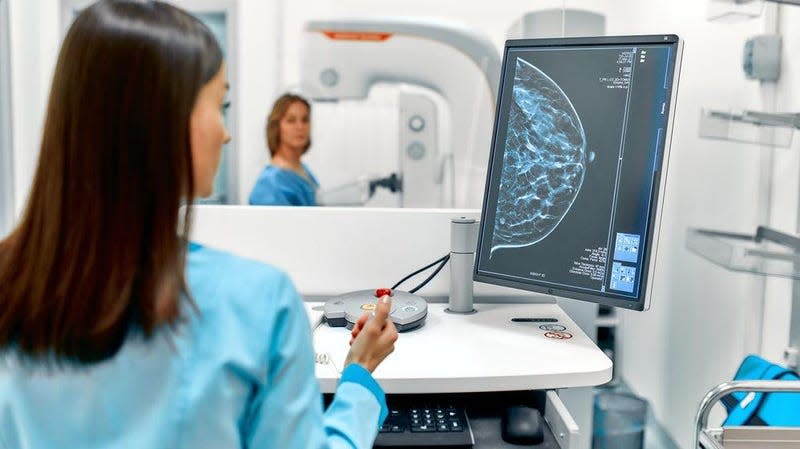AI Could Be Very Useful for Breast Cancer Screenings, Study Finds

Artificial intelligence could be as good as two human radiologists at reviewing breast cancer scans, a new study shows. The trial, published in The Lancet Oncology, revealed that AI could reduce the amount of time doctors spend reading mammograms in half, and early testing found it could alert doctors to more breast cancer diagnoses than they’re finding now.
The trial looked at 80,000 women between the ages of 40 to 80, with an average age of 54 years old. Researchers screened 80,000 women between April 2021 and July 2022. A combination of AI detection and one or two radiologists conducting a human review was used to screen 39,996 patients. The standard screening process with two human radiologists conducting the review was used for the other 40,024 patients. The AI review ended up identifying 244 cases of breast cancer, while the radiologists identified 203 women with cancer in their pool. Overall, researchers found that AI had detected 41 more cancers and reported 19 of those were invasive while 22 were in situ cancers.
Read more
The increased number of in situ cancers found with AI versus standard screening “could be concerning in terms of overdiagnosis,” the study says, which reported that AI-supported screening found 60 in situ cancers while standard screening found 38. When looking at false-positive screenings, researchers found that the AI-supported screening did not result in more false positives than standard screenings. The average false-positive rate was 1.5% in both the AI and standard screening groups.
The AI screening process could have a positive impact of reducing radiologists’ reading workload by 44% at a time when jobs are becoming increasingly hard to fill, the researchers said.
Mammograms typically require two radiologists to review the results, but by including AI in the screening process, the need for review could be cut back to just one radiologist. This may become critical as Radiology Business estimates that by 2024, there will be a nationwide shortage in the U.S. of radiologists and other specialists as high as 35,600, stemming from burnout and an influx of radiologist retirements.
The lead author, Kristina Lång, Ph.D., from Lund University in Sweden, told The Guardian, “These promising interim safety results should be used to inform new trials and program-based evaluations to address the pronounced radiologist shortage in many countries, but they are not enough on their own to confirm that AI is ready to be implemented in mammography screening.” She added that more research still needs to be conducted to fully understand the outcomes of AI screenings and how the technology can assist radiologists, as well as look at whether it is cost-effective to incorporate AI to detect breast cancer.
Lång told The Guardian, “While our AI-supported screening system requires at least one radiologist in charge of detection, it could potentially do away with the need for double reading of the majority of mammograms, easing the pressure on workloads and enabling radiologists to focus on more advanced diagnostics while shortening waiting times for patients.”
The trial is still ongoing as Lång and her team wait for additional results that will demonstrate whether AI will reduce how many women are identified as having breast cancer between screenings and if the results indicate the AI tool is worth rolling out. The full primary outcome of the trial is estimated to be completed in December 2024 after the screened participants have at least had a two-year follow-up.
Screening for breast cancer is an important step women should take to identify and treat the disease early, made even more imperative by the fact that it is the most prevalent cancer worldwide, according to the World Health Organization. WHO notes that more than 2.3 million women are diagnosed with breast cancer every year.
More from Gizmodo
Sign up for Gizmodo's Newsletter. For the latest news, Facebook, Twitter and Instagram.

